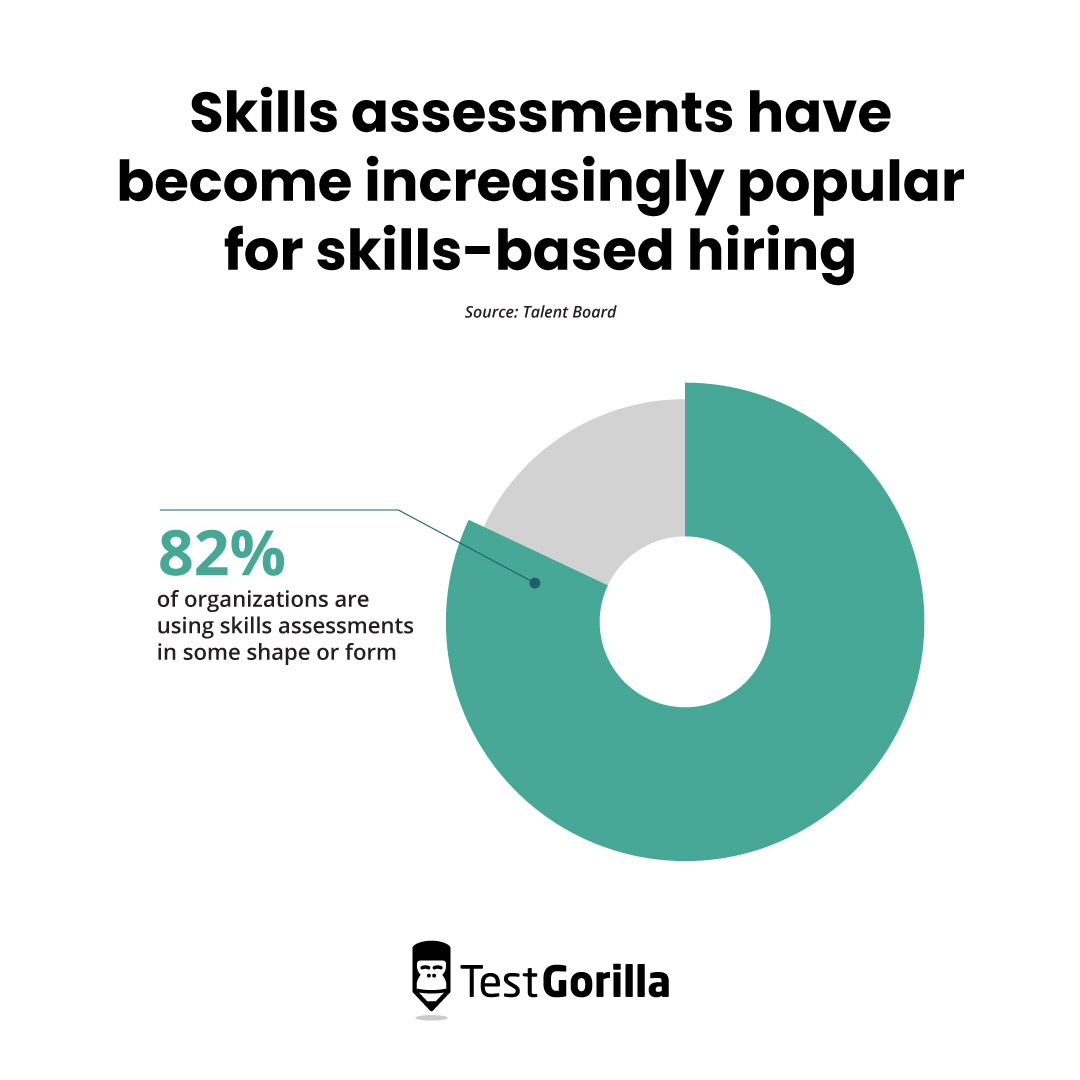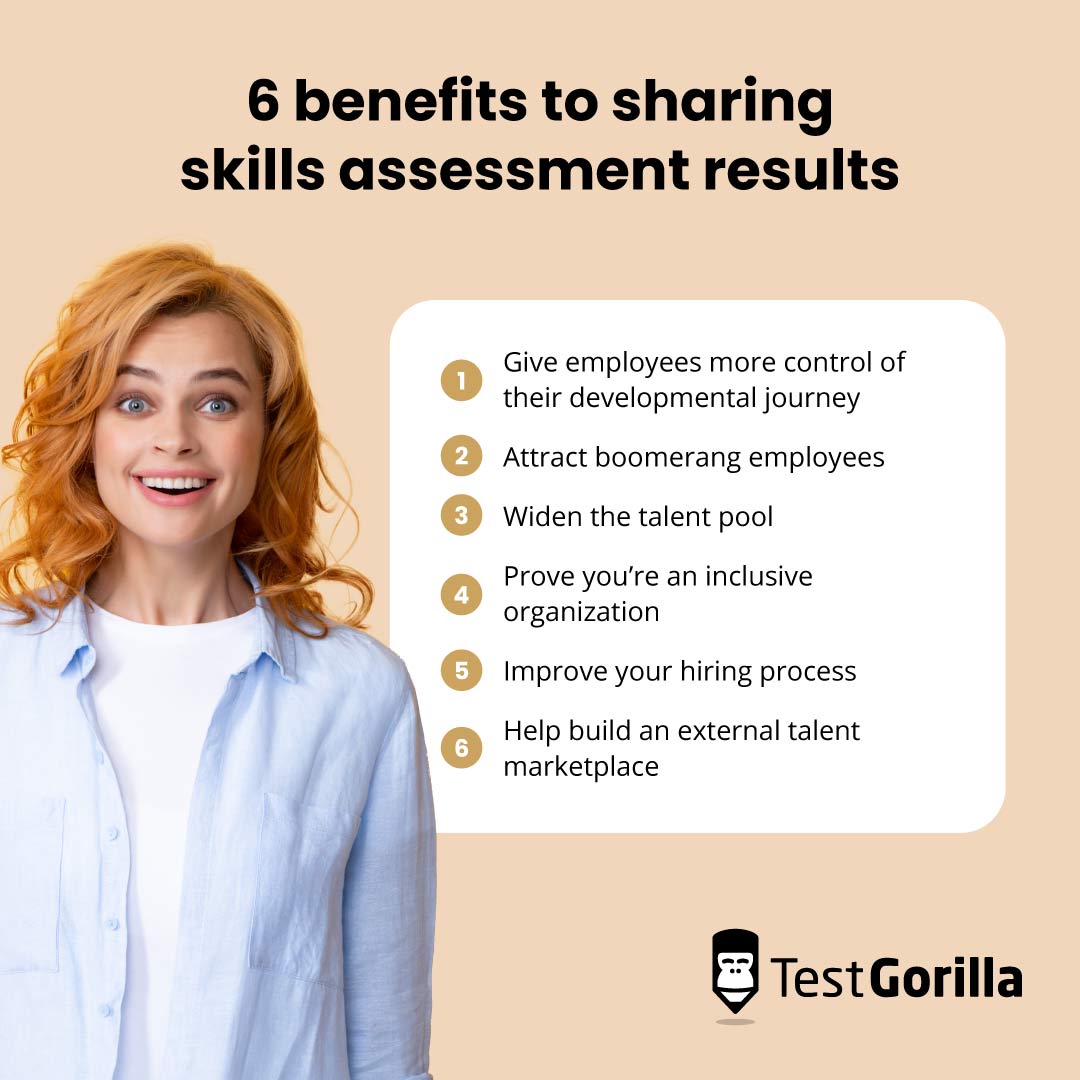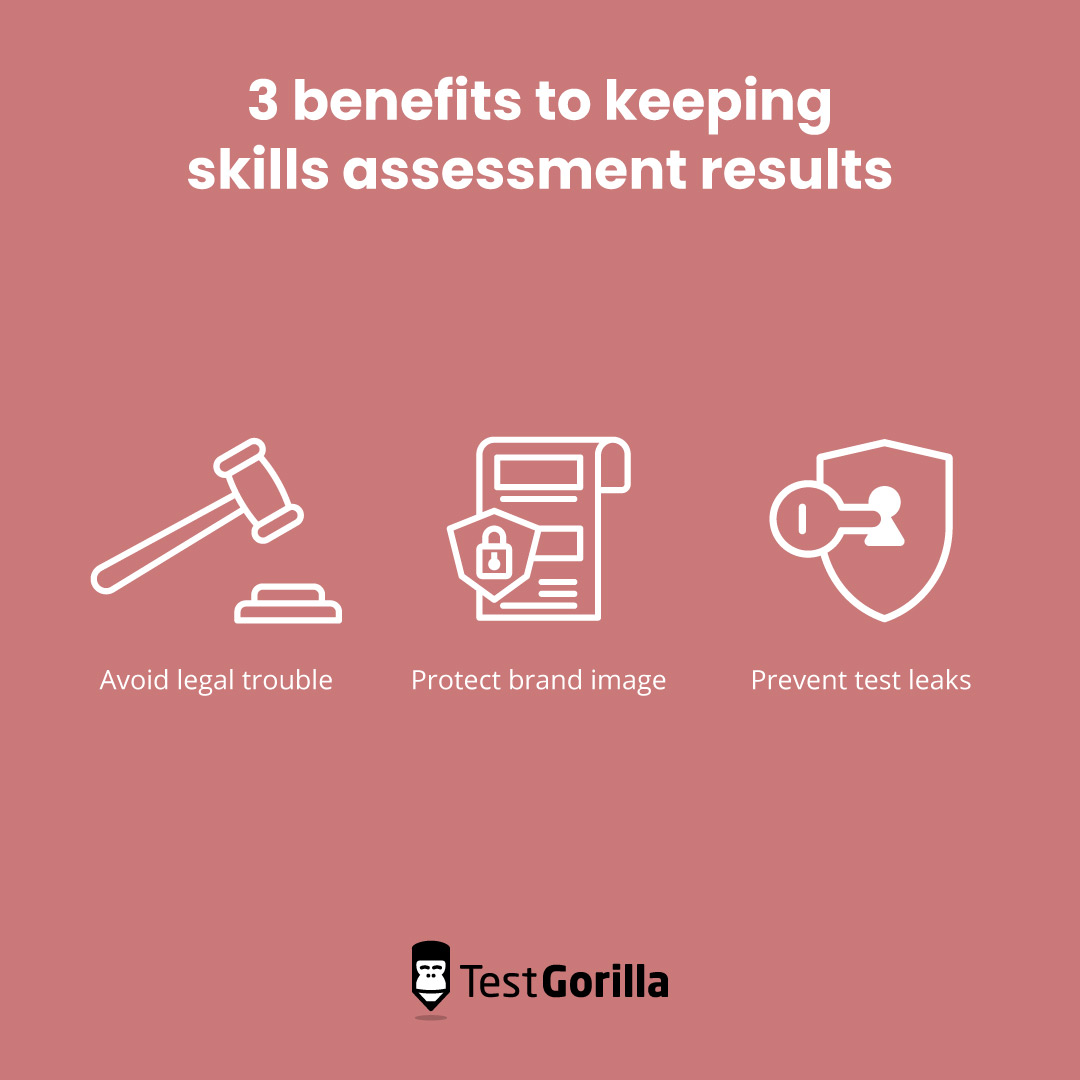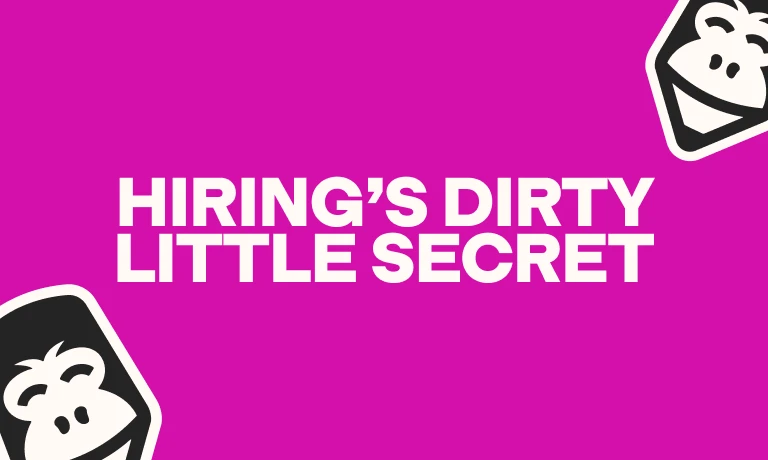With the rise of skills-based hiring and skills-based training, organizations assess their employees at various times throughout their employee life cycle: the recruitment, retention, and development stages.
Pre-employment testing – including multi-measure skills assessments, situational judgment tests, and structured interviews – helps organizations locate talent and predict future job performance.
Using tests for your existing workforce helps you build better development plans for employees to boost productivity and lower turnover.
But what if your employee decides to walk anyway?
What happens to all of that pre-employment testing and developmental data?
There are two options:
Hold on to it to keep your hiring processes internal
Share the results freely with the candidate or departing employees, enabling them to take control of their own development journey and keep growing in their next position
This article takes a deep dive into both of these choices to help you decide which is best for your business.
What is skills assessment data?
Skills assessment data is the collection of each candidate or employee’s measurable and observable responses to your skills-based questions, tasks, or situations.
The purpose of pre-employment testing is to narrow down the candidates who have applied for your opening to find the most skilled candidate for the job. Skills assessments are a facet of skills-based hiring that has become increasingly popular across organizations: 82% of organizations are using skills assessments in some shape or form.[1]
Pre-employment testing results are primarily used to determine which candidate meets the criteria for an opening. But they can also be used post-hire to monitor pre-existing skills gaps within your workforce, form professional development plans, and identify upskilling or reskilling opportunities for current employees.
There are many different types of skills assessments that give employers data about a candidate:
Soft skills tests
Hard skills tests
Role-specific tests
Personality tests
Culture add tests
Cognitive ability test
Situational judgment tests
Emotional intelligence tests
Specific examples of these tests are available in our skills assessment library, where you can also compare candidates’ performance data, like assessment scores, answers, custom question ratings, test completion, and candidate activity on the platform.
But should you keep skills assessment results to yourself or share them with candidates and departing employees? Let’s weigh the benefits and drawbacks of each option.
6 benefits to sharing skills assessment results
As the labor market tightens, companies are more concerned about making a good impression on potential employees and retaining existing talent. In fact, nearly all employees would stay with their company if they felt that their learning and development were a priority.[2]
Sharing the results of skills tests with your employees, regardless of whether they are staying or moving on, can be a valuable asset to their development. Other benefits include widening the talent pool, improving your overall hiring process, and helping build an external talent marketplace.
If you keep an employee’s skills testing data, you lose out on all of these benefits and risk alienating an employee who requests their own test results.
1. Give employees more control of their developmental journey
If you give your employee access to their skills assessment results, they gain better insight into how to develop professionally. For example, if your programmer scored highly on our PHP (Coding) test but did poorly on the DISC Personality test, the employee knows they have to work on soft skills, like collaboration and communication.
If they are actively looking for a new job, are in the interviewing stage, or have already been hired, this information shows them what their strengths are and where they need to improve.
With 82% of employees saying it’s important for their organization to see them as people, giving departing employees access to their testing results shows them you care about more than your bottom line. Sharing insightful internal data shows that you also value your employees as human beings and support their professional development.
When employees feel valued, they share their experiences and improve your company’s image – even after they’ve left your company. It’s a win-win for both you and your current and former employees.
2. Attract boomerang employees
Giving employees the tools to improve is a benefit to both the employee and your organization, even if they are leaving to work somewhere else.
In fact, a 2022 survey found that 43% of people who quit their jobs during the Covid-19 pandemic now admit they were better off in their old job.
It also found that nearly one in five employees who quit their job have already returned to it.
Many boomerang employees, as they are often called, left their original roles because of reasons not directly linked to their employer.
In other words, they didn’t leave their job because they hated it; they left because of other external factors like the COVID-19 pandemic, starting a family, or a surprise offer from a competitor.
According to Abbie Shipp, a management professor at Texas Christian University, signaling to your departing employees that you are willing to take them back is great for your organization.
Sharing skills assessment data with departing employees shows that you are invested in your employee, but it also acts as an incentive for that employee to consider returning in the future.
3. Widen the talent pool
Transparency within your organization builds trust with job candidates and existing employees.
If a talented job applicant is researching companies to apply to and sees your competitor offers to share their pre-employment testing results, that candidate may go with the competitor.
That’s because employees want clarity and open communication about how they will be treated and valued within your organization.
In short: If you’ve got it, flaunt it.
Career transparency isn’t only about clearly communicating your company’s internal career and development opportunities; it’s also about being honest about how your employee performed in the hiring process and letting them make a decision on how to use that information.
Maybe that employee wants to take those scores to land a different job. Maybe they look back on that data and see how much your organization has helped them improve and decide to stay put.
Either way, the employee will probably share their experiences at your company with family, friends, and potential applicants through job review sites.
There’s a good chance a new candidate you want to hire sees your transparency as a sign that you are the right employer for them.
4. Prove you’re an inclusive organization
Skills assessments that follow best practices have proven to build more inclusive organizations.
In fact, our State of Skills-Based Hiring 2022 report shows 91% of employers saw an increase in diversity when using skills-based hiring strategies like pre-employment testing.
That’s because multi-measure skills assessments, structured interviews, and skills-based hiring techniques overcome unconscious bias to hone in on whether the candidate has the skills to succeed in the role.
Sharing your skills assessment data takes this a step further.
It’s one thing to tell employees your assessment process is inclusive, and it’s another to show them.
Walking your departing employees through the testing process and their performance results gives them the opportunity to see firsthand how objectively they were treated throughout the hiring process.
If you have already invested valuable time and resources into a skills-based hiring process that eliminates bias, don’t hide that information. Use it as a tool to attract the best and brightest from diverse backgrounds.
5. Improve your hiring process
Giving candidates and employees access to their skills assessment data improves your hiring process in three ways:
It improves the candidate experience
Candidates spend countless hours bending over backwards for employers by filling out job applications, sitting through interviews, and taking skills tests.
Although skills-based hiring has proven to have a positive impact on hiring speeds, sharing assessment results offers candidates real insights to weigh against the time spent going through the process.
Sharing results introduces a collaborative relationship with your candidate. You both put in work and both get something out of it, which improves the candidate experience.
It facilitates feedback
Welcoming feedback from candidates and existing employees about your hiring process only improves it.
For example, if an existing employee is second-guessing their outside sales skills like closing and overcoming objections, show the employee the details of their Outside Sales (B2B) Skills test so they can compare their results to how they’re feeling about their performance.
This concrete feedback helps boost employee performance. If the candidate does not get the job, it helps them identify the skills to improve if they want to apply again in the future.
This approach also helps you give candidates constructive interview feedback.
It reveals gaps in your hiring process.
Gaps in your hiring process can be a lack of organization, improper scoring, using the wrong tests, or not using tests at all.
Giving employees a rundown of what they were tested for keeps everyone on the same page about how the employee was tested and how the employee felt about that experience.
With 94% of candidates wanting feedback about their pre-employment performance and only 41% saying they have received it, sharing pre-employment testing data is an easy way to bridge the gap and keep your process on track.[3]
6. Help build an external talent marketplace
It’s no secret that the modern workforce is changing.
The Covid-19 pandemic, the Great Reshuffle, and the rapid progression of the digital age are encouraging employees to seek flexible, transparent, and inclusive organizations.
Sharing skills assessment results with candidates and existing employees helps organizations meet these demands by offering transparency around their hiring processes and by combating hiring bias.
But it can also help build an external talent marketplace where companies can collaborate with other organizations and share skills test data freely.
This exchange fills talent gaps and helps employees develop in a world where nonlinear careers become the norm.
Nonlinear careers turn the traditional career model on its head.
Instead of employees progressing up the ladder of seniority one role at a time, they make lateral moves or even go back to become familiar with other aspects of an organization or industry.
An external talent marketplace fosters communication and collaboration between organizations to make internal skills and development data accessible to other employers to help fill vacancies.
Employers would gain in-depth information about employee skills in the same or parallel talent pools to make more informed decisions about whom to hire and whom to advertise their postings to.
If multiple employers build an open line of communication about their skills inventory and skills gaps, they can use skills assessment data to mutual benefit.
Let’s say a worker wants to leave their management role at company A to go work in a customer-facing sales role.
In an external marketplace, employer A can help employer B fill their open sales position by sharing that skills assessment data directly or by giving it to the employee to streamline the job search.
Sharing skills assessment data can also contribute to an external talent marketplace by bolstering candidates’ career portfolios, employment histories that include a broad range of professional responsibilities, identities, and work samples.
Employees can include their skills assessment results in their portfolios and use them to attract recruiters or organizations that want their specific set of skills.
The best insights on HR and recruitment, delivered to your inbox.
Biweekly updates. No spam. Unsubscribe any time.
3 benefits to keeping skills assessment results
As we have seen, there are several benefits to sharing skills assessment data. But if that’s the case, why don’t more employers do it?
The short answer: They want to protect their businesses.
Keeping departing employees’ skills assessment results means you miss out on all the benefits of sharing them. Your company’s image can take a nosedive if former employees are unhappy with not having their results shared with them when they leave.
But keeping results can also prevent liabilities like lawsuits, negative feedback, and test answers from being leaked.
Let’s take a look at the benefits of holding on to your skills assessment results.
1. Avoid legal trouble
Upstate Niagara Cooperative had to pay a $1.35m settlement brought by a female candidate who had to lift a 50-pound crate as part of a pre-employment assessment. The company hired 155 men and only five women from 2008 to 2014.
It’s crucial for employers to ensure that their assessments have predictive validity to avoid bias and discrimination in hiring processes.
Predictive validity means the performance in an assessment predicts the performance in the conditions being modeled, like the workplace, team settings, or role-specific projects.
If you are not sure whether your pre-employment testing meets the proper standards of predictive validity, you should halt your testing program and learn how to adopt skills-based hiring practices effectively.
2. Protect brand image
Nearly three-quarters of recruiting leaders believe a company’s brand has a significant impact on hiring.
If your hiring practices are unorganized, prone to bias, or misleading, this jeopardizes your brand’s image.
For example, if an interviewer asks a candidate questions about their race, gender, or age, those questions and answers are recorded in the interview assessment data.
Asking those types of questions does not align with skills-based hiring practices because they introduce bias into the process and can be used to discriminate against the candidate being interviewed, which violates equal opportunity laws.
Ideally, organizations would operate ethically and steer clear of these questions, but the fact remains that sharing assessment data would reveal this information and risk damaging that organization’s brand.
But there are ways to minimize hiring bias and avoid this scenario.
3. Prevent test leaks
It doesn’t take more than a quick Google search to find former employees or job candidates leaking answers to pre-employment tests.
In fact, this trend is what has left many employers hesitant to implement skills tests in the first place. A 2018 study found that 13.84% of unproctored test-takers were suspected of cheating.[4]
Keeping a tight lid on your test results can potentially reduce the number of cheaters taking your skills tests.
However, you can minimize the impact of cheating on your skills-based hiring strategy by:
Having positive communication with candidates to reduce motivations for cheating
Using anti-cheating protocols
Replacing resumes and cover letters with proctored tests
Making it hard to share questions and answers (from tests and interviews)
Using multiple methods to test candidates
Although test leaks are possible, they are more myth than fact when it comes to impacting your pre-employment testing process.
Still, it is up to each individual employer to weigh the pros and cons of sharing pre-employment testing data with candidates and employees.
Consider the benefits and drawbacks of sharing pre-employment testing results
No matter what you decide to do with your pre-employment testing data, it is important to consider the different outcomes of sharing those results.
Sharing test results with departing employees can empower them along their career journey to upskill or reskill for a different role.
For job candidates, it facilitates constructive feedback, helps improve their abilities for the next time they apply, or directs them to an industry that might be better suited for their current skills.
Sharing pre-employment testing data with other organizations can help build an external talent marketplace to streamline hiring and match the right organizations with the right candidates.
But there are risks: potential legal issues if your testing isn’t rock-solid or a candidate using the data to help someone else cheat.
As the talent market continues to evolve, it’s important to keep every tool at your disposal as an employer.
If you’re not up to speed on how skills-based hiring strategies can improve your organization, follow our guide to pre-employment skills testing to get started.
Sources
“The 2019 Talent Board North American Candidate Experience Benchmark Research Report Now Available”. (2019). Talent Board. Retrieved June 19, 2023. https://www.thetalentboard.org/report/the-2019-talent-board-north-american-candidate-experience-benchmark-research-report-now-available
Chelovechkov, Artem, et al. (2019). “2019 Workplace Learning Report: Why 2019 is the breakout year for the talent developer”. Linkedin. Retrieved June 19, 2023. https://learning.linkedin.com/content/dam/me/business/en-us/amp/learning-solutions/images/workplace-learning-report-2019/pdf/workplace-learning-report-2019.pdf
“The Ultimate List of Hiring Statistics For Hiring Managers, HR Professionals, and Recruiters”. (2015). Linkedin. Retrieved June 19, 2023. https://business.linkedin.com/content/dam/business/talent-solutions/global/en_us/c/pdfs/Ultimate-List-of-Hiring-Stats-v02.04.pdf
Aguado, David, et al. (December 2018). “Cheating on Unproctored Internet Test Applications: An Analysis of a Verification Test in a Real Personnel Selection Context”. ResearchGate. Retrieved June 19, 2023. https://www.researchgate.net/publication/329364614_Cheating_on_Unproctored_Internet_Test_Applications_An_Analysis_of_a_Verification_Test_in_a_Real_Personnel_Selection_Co
You've scrolled this far
Why not try TestGorilla for free, and see what happens when you put skills first.





















